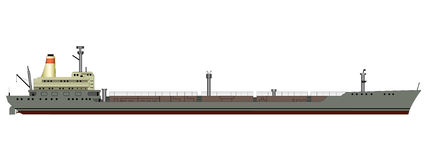



Hunterston Ore Terminal when built was one of the finest deep water ore/coal terminals in the world. It was built between 1974 and 1979 primarily to supply the needs of the British Steel Corporation's Scottish works, and was directly linked by rail to the large integrated Ravenscraig Steelworks in Motherwell some 40 miles inland.
The land that the Ore Terminal was located a lot of area was reclaimed from the sea. The ancient coast road and recent A78 road used to be located on the edge of the River Clyde, as shown in yellow below. When the site was developed the road was moved half a mile inland and much of the Hunterston and Fairlie Sands were reclaimed and the area expanded.
At the North of the site a lagoon and bird sanctuary was developed to help protect some of the wildlife and a long conveyor belt and twin cranes were built to serve the ships laden with Ore and Coal. To the South another conveyor was built, this time crossing the re-aligned A78 and made its way upto the railway to serve the large loader unit, and finally to the West a direct reduction plant was constructed, it was the first of its type in the UK.
Some of the rock for the reclaimed land was mined from the nearby Biglees Quarry and also from land directly below Campbelton Farm. A special road known as the Construction road was built from the Campbelton area and made its way towards the Power Station access road. A Bailey Bridge was constructed to cross this road and the constriction road continued into the new site across the burn gill.
Next to the Burn Gill there was a farm called Poteath, it was demolished to make way for the construction road but also as it was on the new land and would have been in the way.
Around the whole site (except the side next to the sea) the land was landscaped and large mounds covered in trees and bushes were planted to hide the site away, so now when you drive along the A78 you cannot see the current site
It was decided to make the location at Hunterston as the River Clyde at that point was deep enough to cater for large ships, it was an upcoming industrial area, it was next to a railway and the waters were sheltered with a small tidle range that is self scouring and is virtually fog free.
The land that the Ore Terminal was located a lot of area was reclaimed from the sea. The ancient coast road and recent A78 road used to be located on the edge of the River Clyde, as shown in yellow below. When the site was developed the road was moved half a mile inland and much of the Hunterston and Fairlie Sands were reclaimed and the area expanded.
At the North of the site a lagoon and bird sanctuary was developed to help protect some of the wildlife and a long conveyor belt and twin cranes were built to serve the ships laden with Ore and Coal. To the South another conveyor was built, this time crossing the re-aligned A78 and made its way upto the railway to serve the large loader unit, and finally to the West a direct reduction plant was constructed, it was the first of its type in the UK.
Some of the rock for the reclaimed land was mined from the nearby Biglees Quarry and also from land directly below Campbelton Farm. A special road known as the Construction road was built from the Campbelton area and made its way towards the Power Station access road. A Bailey Bridge was constructed to cross this road and the constriction road continued into the new site across the burn gill.
Next to the Burn Gill there was a farm called Poteath, it was demolished to make way for the construction road but also as it was on the new land and would have been in the way.
Around the whole site (except the side next to the sea) the land was landscaped and large mounds covered in trees and bushes were planted to hide the site away, so now when you drive along the A78 you cannot see the current site
It was decided to make the location at Hunterston as the River Clyde at that point was deep enough to cater for large ships, it was an upcoming industrial area, it was next to a railway and the waters were sheltered with a small tidle range that is self scouring and is virtually fog free.



